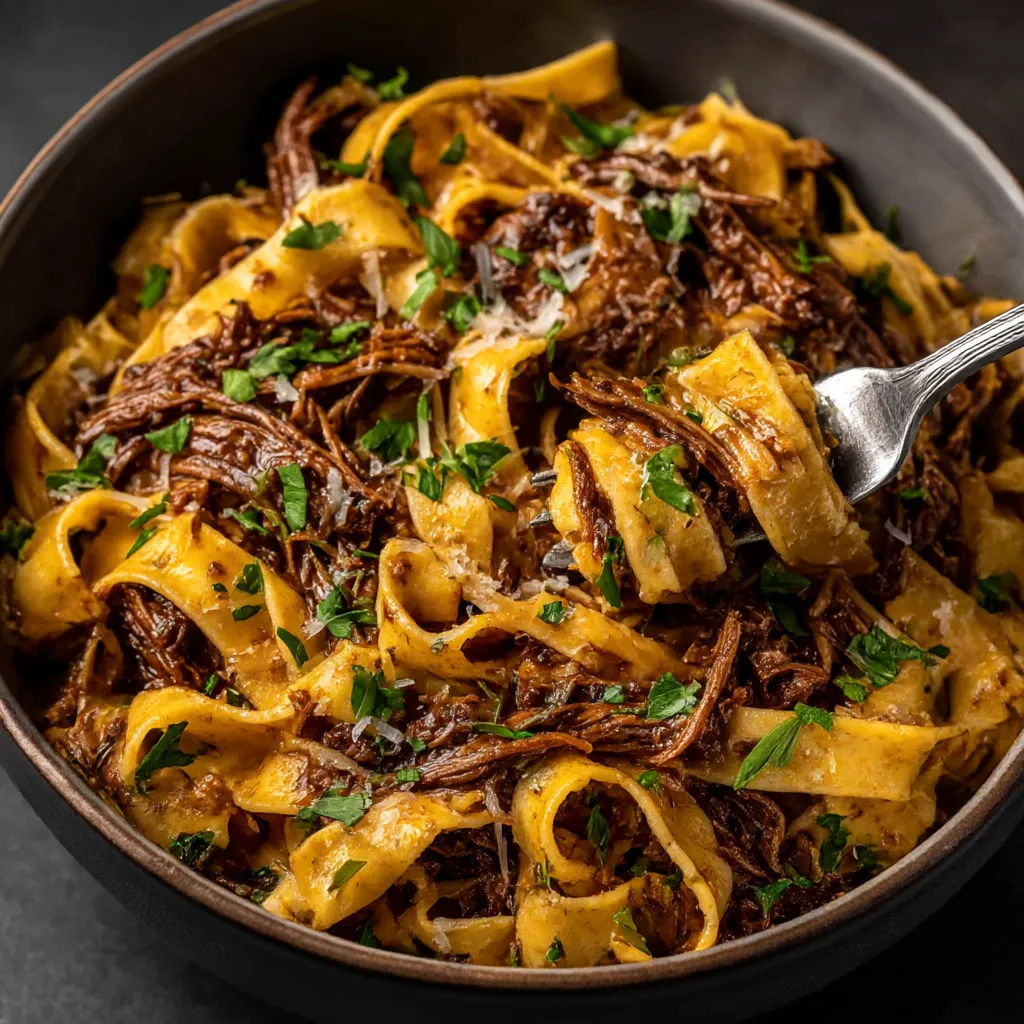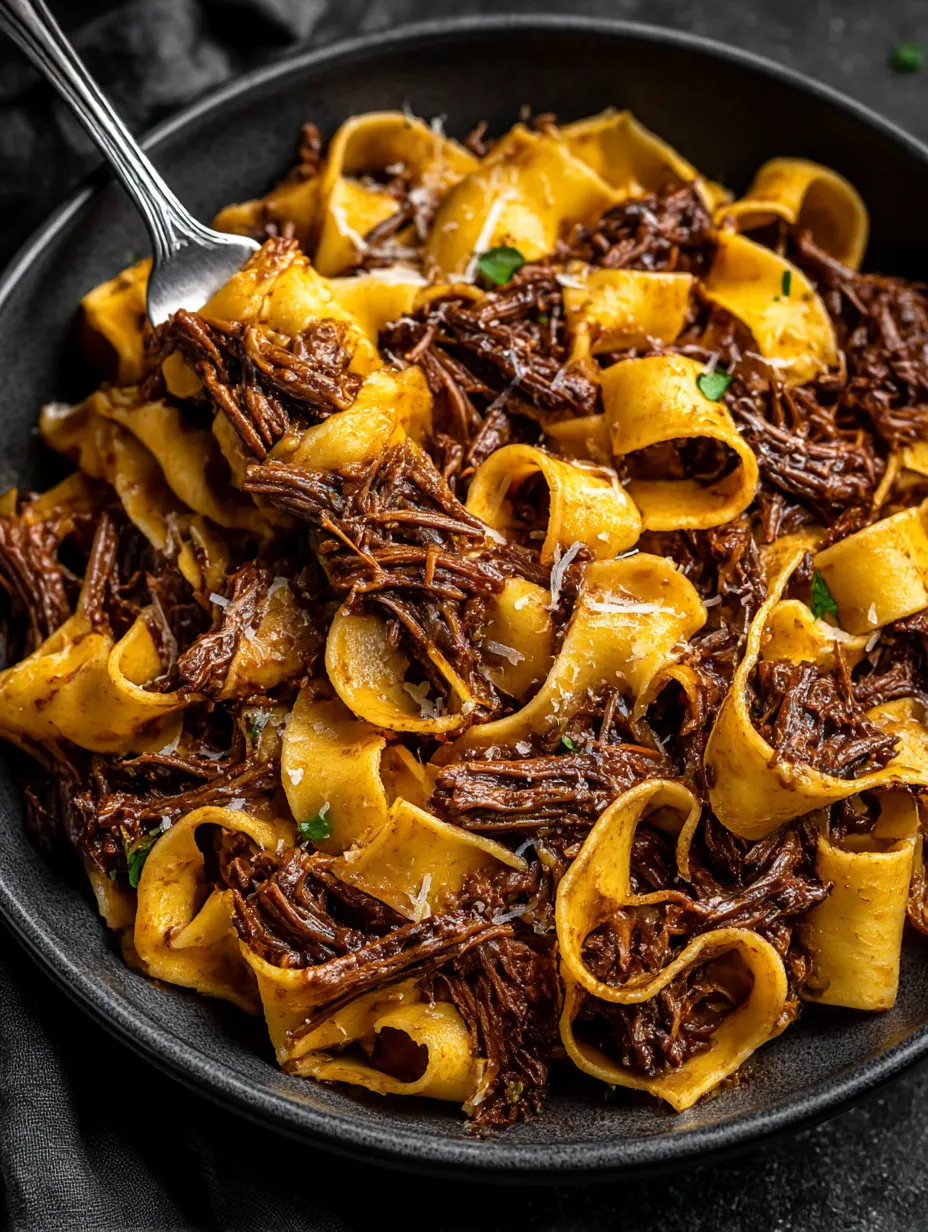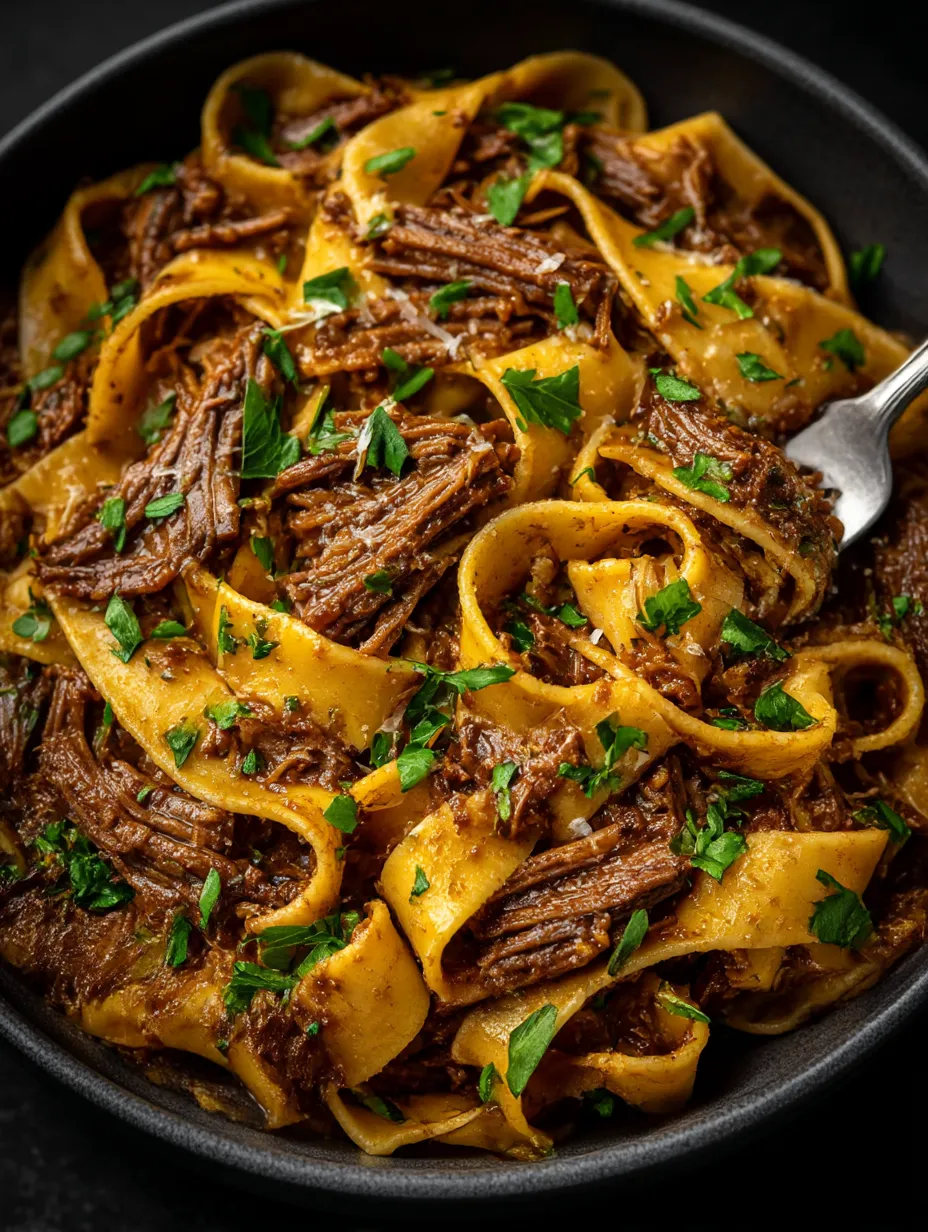 Save
Save
There is nothing quite as comforting as a pot of slow-cooked short rib ragu bubbling away in the kitchen. This recipe is rich with tender beef, tomatoes, wine, and aromatics and perfect for spooning over wide ribbons of pasta or creamy polenta. If you crave true Italian comfort food with deep flavor and melt-in-your-mouth beef, this dish always hits the spot.
My first time making short rib ragu was on a chilly evening for a big family dinner. The aroma that filled the house had everyone peeking into the kitchen. There were no leftovers and it instantly became one of my go-tos for special occasions.
Ingredients
- Beef short ribs cubed: opt for marbled cuts with good fat for most flavor
- Light olive oil or vegetable or avocado oil: helps brown the ribs and prevents sticking
- Kosher salt: brings out the best in both beef and sauce
- White onion finely diced: look for firm onions with no soft spots
- Celery finely diced: adds an earthy aromatic base
- Carrot finely diced: brings natural sweetness and color
- Garlic cloves finely minced: choose fresh plump cloves not pre-minced
- Tomato paste: enriching tomato flavor and thickness double concentrated is best
- Red wine: use a dry red cooking wine for balanced acidity and depth
- Broth beef or chicken: low sodium is best to control overall saltiness
- Crushed tomatoes: good quality canned or boxed tomatoes make a difference
- Herb bundle rosemary thyme parsley stems: tie with kitchen twine for easy removal
- Bay leaves: add subtle perfume and background flavor
- Sherry or red wine vinegar: for balancing richness with acidity
- Fresh cracked pepper: for gentle heat and complexity
- Pasta tagliatelle or pappardelle: go for bronze cut pasta for sauce cling
- Chopped parsley and grated parmigiano reggiano: a bright fresh garnish and nutty finish
Step-by-Step Instructions
- Season the Ribs:
- Sprinkle the cubed short ribs on all sides with kosher salt. Let them sit at room temperature while you prep the vegetables as this helps infuse flavor.
- Brown the Meat:
- Heat light olive oil in a heavy braiser or Dutch oven over medium-high heat. When shimmering, add a layer of short ribs avoid crowding to get even caramelization. Sear each side until deep golden brown. Transfer seared pieces to a plate and repeat with remaining ribs.
- Build the Aromatic Base:
- Pour off extra grease if needed leaving only enough oil to coat the bottom. Add onion celery carrot and garlic. Sauté on medium high for at least 3 to 4 minutes stirring to release moisture and soften the vegetables. Aromatics should become translucent and very fragrant.
- Develop Sauce Depth:
- Add tomato paste straight to the vegetables. Sprinkle with kosher salt and fresh cracked pepper as you stir. Sauté the paste for another 2 to 3 minutes. This caramelizes the tomato and builds a thick flavor base.
- Deglaze and Simmer:
- Time for the red wine Pour it in and scrape up every brown bit from the pot as the wine bubbles. Return the seared short ribs along with broth and crushed tomatoes. Add your bundle of herbs and bay leaves. Bring to a gentle simmer and partly cover leaving the lid slightly ajar. Continue to check on the pot every half hour making sure it is not drying out and keeping the heat low and steady.
- Slow Cook Until Tender:
- Let the mix bubble gently for about two to two and a half hours. You know it is ready when the beef easily falls apart with a fork. Add a splash more broth if at any point it looks dry. For extra tenderness cook for up to three hours as needed.
- Finish and Shred:
- Pluck out the herb bundle and bay leaves. With tongs or forks shred the beef directly in the pot. Remove any bones or cartilage. Stir in sherry or vinegar to brighten the flavor and continue simmering uncovered if you prefer a thicker sauce.
- Serve and Garnish:
- Serve the ragu generously over freshly cooked pasta. Finish with chopped parsley and plenty of grated parmigiano reggiano for a perfect Italian touch.
 Save
Save
I always love how the addition of fresh herbs transforms the ragu from basic to exceptional. Rosemary in particular always reminds me of family gatherings and Sundays spent in the kitchen surrounded by laughter.
Storage Tips
This ragu stores well in the fridge for up to four days in an airtight container. The flavors deepen after a night in the fridge and it reheats gently on the stovetop. For longer storage freeze in well-sealed portions and thaw overnight before gently warming through. Sometimes I freeze individual servings of both ragu and cooked pasta so lunch is only minutes away.
Ingredient Substitutions
If short ribs are unavailable you can substitute stew beef or even chuck roast cut into cubes. For wine you can use broth with a splash of balsamic vinegar if you prefer to avoid alcohol. Choose gluten-free pasta if needed. If fresh herbs are short on hand dried will work but use a bit less as dried herbs are more potent.
Serving Suggestions
This ragu is classically Italian when served with wide egg pastas like pappardelle or tagliatelle but it is just as delicious spooned over creamy polenta or even rustic mashed potatoes. For a special twist top with a dollop of ricotta or layer into lasagna. Do not forget lots of crusty bread for scooping up every bit of sauce.
 Save
Save
Cultural Context
Short rib ragu is rooted in traditional Italian home cooking using lesser cuts of beef that become luxurious through patient simmering. These slow-cooked sauces were staples of Sunday family meals where the pot simmered all afternoon and family and friends gathered around the table for hours. It is a dish meant to feed a crowd and warm the soul.
Frequently Asked Questions About Recipes
- → Can bone-in short ribs be used?
Yes, bone-in short ribs add extra depth of flavor. Remove bones after braising and shred the meat before serving.
- → What are the best pasta shapes to pair?
Hearty cuts like pappardelle, tagliatelle, orecchiette, rigatoni, and cavatelli work particularly well with rich, meaty sauces.
- → Is it possible to substitute the wine?
If you'd rather not use wine, simply replace it with extra broth. The flavor will differ but stay delicious.
- → Can leftovers be frozen?
Yes, the sauce keeps well in the freezer for up to three months. Reheat gently before serving, stirring in a splash of broth if needed.
- → What are good serving alternatives to pasta?
Try the sauce atop creamy polenta, as a filling for ravioli or lasagna, or spooned over roasted vegetables.
- → How do I avoid a greasy sauce?
After searing the ribs, pour off any excess fat, leaving behind about two tablespoons to sauté the vegetables.
